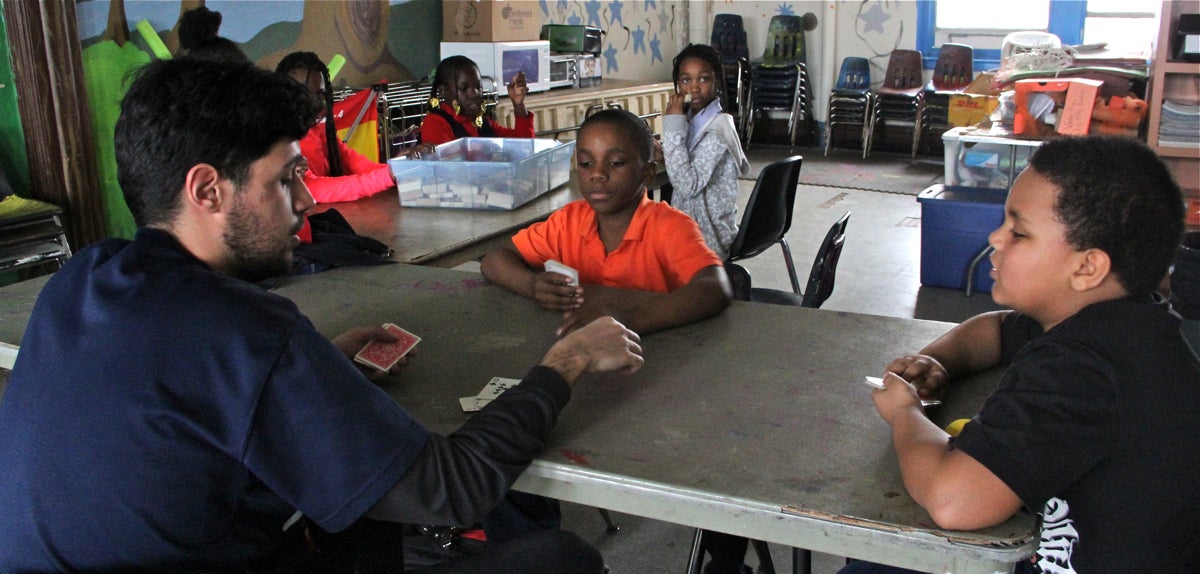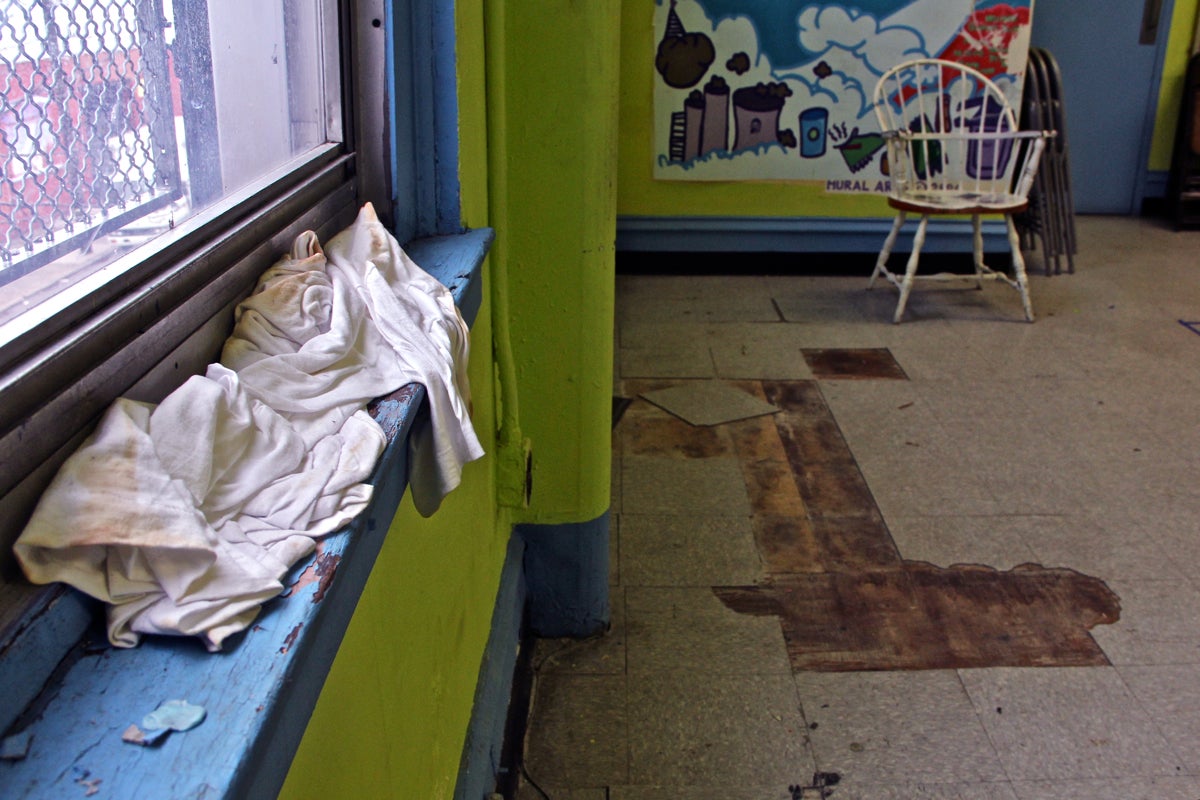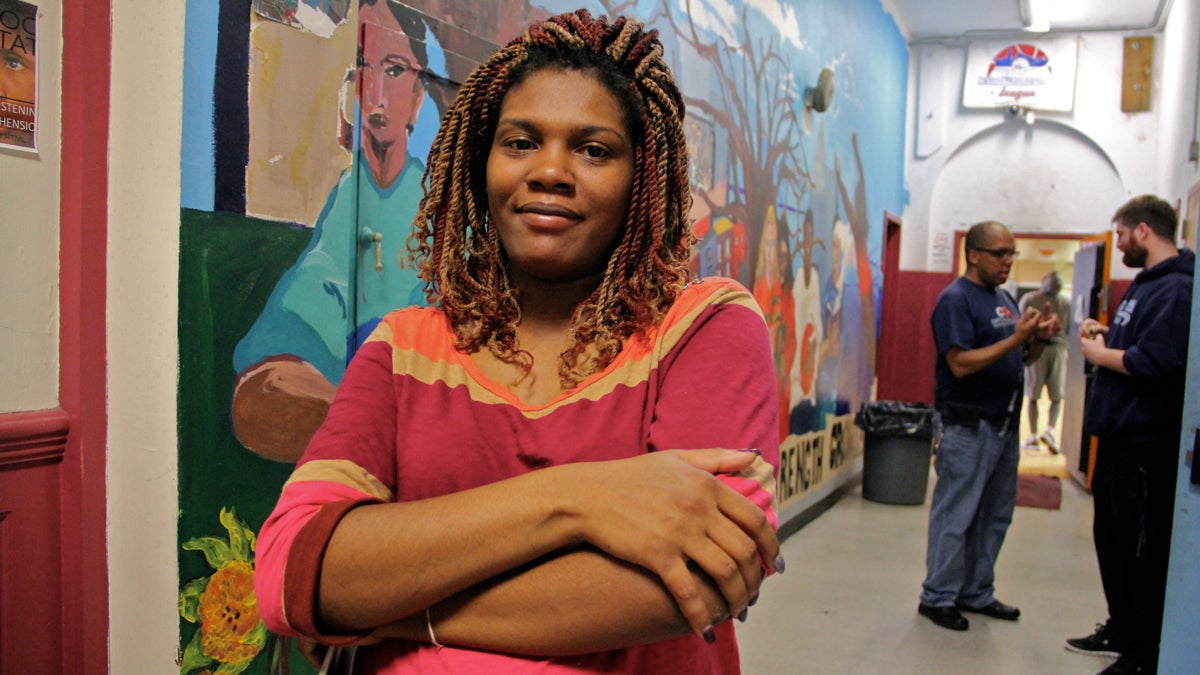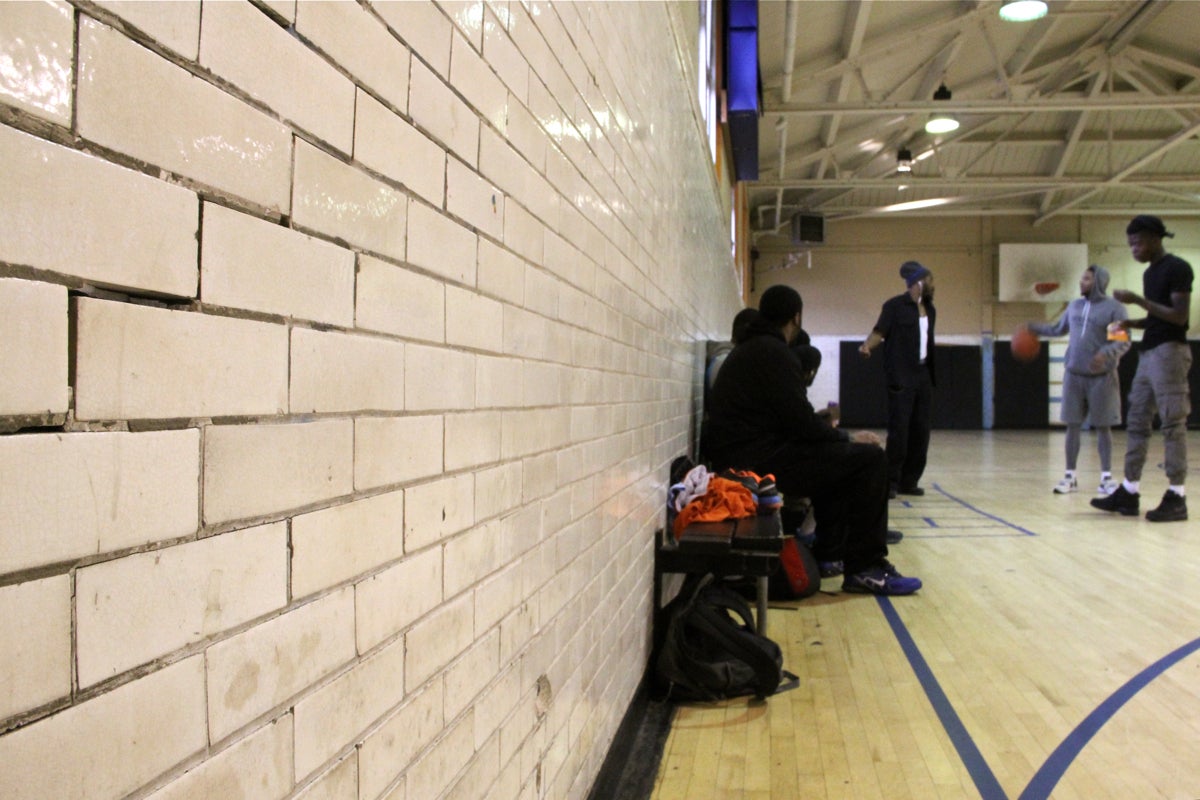Kenney seeking $300 million in bond sales to spend on parks, rec centers, libraries

In his budget address next week, Mayor Jim Kenney will outline what could be a signature initiative for his first term: a major push to repair and improve parks, recreation centers, and libraries in neighborhoods across the city.
The initiative would involve the city selling $300 million in bonds, plus securing funding from the state and federal governments and philanthropic foundations that could bring the total investment to around $500 million over the next few years, Kenney said in an interview on Wednesday. Kenney has been dropping hints since taking office that his administration would focus investment on public infrastructure in neighborhoods, touting the benefits of improving parks and recreation centers in his annual address to the Chamber of Commerce last week.
On Wednesday, he said the initiative is about giving communities the public spaces they deserve.
“When we have a football league in South Philadelphia where we have suburban people come into our communities and look at what our kids have to play with, and then our kids go out to the suburbs and play in pristinely manicured fields, it makes us feel like second-class citizens, and we’re not,” he said. “I think this investment will give people in every community a sense of equity and fairness, that we care about them and we value them as citizens.”
The city has struggled to maintain parks and recreation centers for years, and it shows.
At Vare Recreation Center in Grays Ferry on Wednesday morning, windows were drafty, patched up with plywood or stuffed with cloth, and some tiles in the auditorium’s drop ceiling dangled precariously. Some days, the heat runs full-blast, making it stuffy in the upstairs classroom where about 40 children attend after-school programs, according to Cecile Kase, who’s in charge of maintenance at Vare. Other days, it doesn’t even turn on.
“I’m hoping it takes us through our winter, but there’s been days when we’ve come in here and we had no heat at all,” Kase said.
Philadelphia Parks & Recreation currently runs on a budget of around $60 million a year. In terms of parks spending relative to the city’s population, that’s the lowest of the top ten cities in the country and well below the national average, according to the Kenney administration.
Given its scope, the program could be a defining feature of Kenney’s first term. He’s convinced it’s the right priority for investment, saying it dovetails with efforts to establish universal pre-kindergarten education and create community schools that also provide health and child-care services in neighborhoods.
“We have neglected these structures for years,” he said. “You’re fixing boilers with duct tape, and you’re worrying about the roof leaking onto the basketball floor and tearing up the floor … People struggle with trying to maintain their facilities while you’re running a football or baseball program and you’re playing on a dust bowl.”
Managing Director Mike DiBerardinis, who was commissioner of Parks & Recreation under former mayor Michael Nutter, began talking with Kenney about making a big investment in community infrastructure last summer. At DiBerardinis’ suggestion, PIDC applied for and received a planning grant from the William Penn Foundation to lay the groundwork for an investment. PIDC’s planning has been focused so far on collecting and analyzing data about the city’s public assets, including information about upkeep and deferred maintenance, to help the city understand how to prioritize investments in parks, recreation centers, and libraries.
“The city has so significantly disinvested in the operation of these facilities over time that in a lot of ways this is a big catch-up on that,” said John Grady, PIDC’s director.
The John S. and James L. Knight Foundation is funding a smaller second phase of planning for how to invest city money raised through the bond sales. Both Knight and William Penn could be among a group of foundations that help fund implementation of the program down the line.
“I think there’s just a lot of overall momentum and excitement around public spaces and civic assets here that is kind of historic,” said Patrick Morgan, a program director with the Knight Foundation who served as deputy to DiBerardinis at the Department of Parks & Recreation. “The Kenney administration has heard that and is trying to take it to a whole ‘nother level, frankly.”
Representatives of the two foundations stressed that they haven’t yet made any commitments beyond the planning phase.
“The money’s not in the bank,” DiBerardinis said on Wednesday, “but we’re confident that hundreds of millions of dollars of philanthropic support will be available to this project.”
Since 2013, when the William Penn Foundation drafted a new grantmaking strategy that emphasizes improvements to public space, the foundation has committed $92 million toward parks, trails, and library improvement projects across the region. Where the foundation formerly funded policy and planning work around public space, its focus has now turned to implementation.
“We think that all residents of the city, children and families, deserve access to high-quality public amenities, like high-quality parks, libraries and rec centers,” said Shawn McCaney, director of William Penn’s Creative Communities initiative. “And we think those kind of investments really enhance the quality of life in neighborhoods. But also, we think they are very important places for civic engagement. They’re the places where communities gather and, frankly, where community-building happens, and that’s a huge interest of ours.”
The bonds would likely be sold in three phases, according to Rob Dubow, the city’s finance director. A sale of city bonds would require voters to approve the initiative via a ballot question, or they could be sold through one of the municipal authorities, like PIDC or the Philadelphia Authority for Industrial Development.
The last time a mayor announced a major bond sale to fund a new program, it was John Street in 2001, announcing his Neighborhood Transformation Initiative, which was meant to improve communities by tearing down vacant houses, removing abandoned cars, and assembling land for future development. City Council eventually approved a $295 million bond issue for the initiative. Prior to that, the city issued bonds to help build the new stadiums at the sports complex in South Philadelphia. The city also sells bonds routinely to fund basic capital expenditures.
Dubow said the city would sequence the bond sales to avoid doing one major bond issue. The city’s bond rating, which improved while Dubow was finance director under Nutter, makes it cheaper to sell the debt.
“But it’s also investment in our own infrastructure, which is the right thing to borrow for,” Dubow said. “We’re investing in our assets.”
“Not in two professional sports teams,” Kenney chimed in.
The proceeds of the bond sales, which will need City Council’s approval, would be administered through the managing director’s office. The planning work funded by Knight and William Penn is meant to help the city get a jumpstart on how to invest once the money is in hand.
“A big piece of this is about how we collect data and how we prioritize,” said Brian Abernathy, the deputy managing director under DiBerardinis. “I think equity is going to be a part of our prioritization. Past investment is going to be about how we prioritize. The population and the context of where the rec center lives is going to be a big piece of what this is. There [is] absolutely pretty solid evidence that rec centers in very strong neighborhoods have been very well taken care of, and those in not-so-great neighborhoods haven’t been. We’re going to try and address that.”
City Council President Darrell Clarke acknowledged that he’s had conversations with the Kenney administration about investing in parks and rec centers, but that he was waiting to see specifics of how the funds would be spent. He said he agrees that the current level of funding for those facilities is insufficient.
Bobby Henon, Council’s majority leader, said that the Kenney administration appeared to be committed to getting Council members’ input on implementing the investment.
“Of course the district councilmembers know their districts, they know their rec centers, they know their communities …” Henon said on Thursday morning. “I think working with the mayor on this would be a great partner opportunity. And I think the mayor’s office, the mayor himself, has indicated that, ‘We want to hear from you, district councilmembers. We want to hear from you and your community to see what is your vision, and the priority order.’”
DiBerardinis said that some parks, recreation centers, and libraries could start seeing money for improvements next year.
“A lot of times, city projects in the past have gone the way of politics and the way of other things and you never got the value you intended to get,” Kenney said. “You want to talk about legacy or reputation? That’s on me. For this not to be done right is on me personally, because that means I fell down.”
Ashley Hahn and Dave Davies contributed to this story.
WHYY is your source for fact-based, in-depth journalism and information. As a nonprofit organization, we rely on financial support from readers like you. Please give today.







